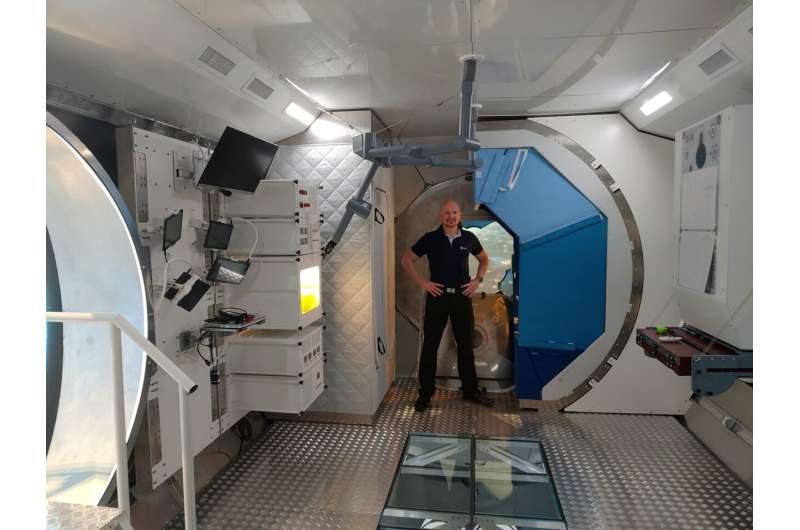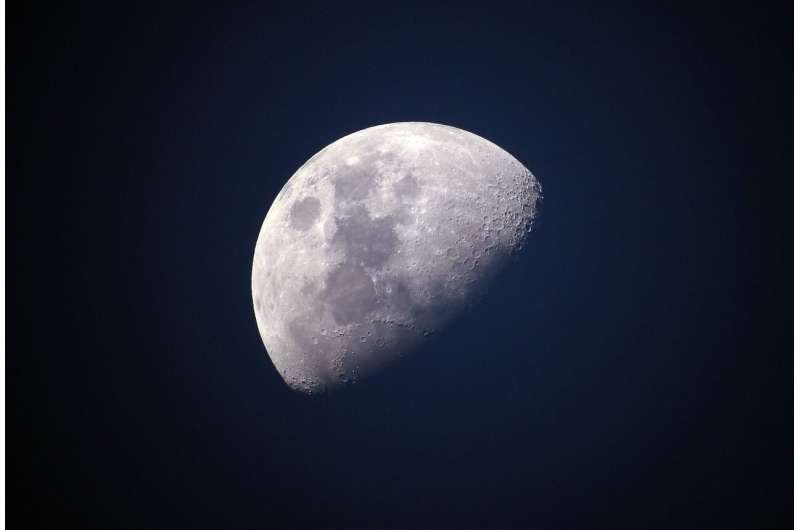
Copernical Team
Satellite imagery gives researchers timeline of when swine waste lagoons were built
 Researchers at North Carolina State University have developed an automated technique that uses satellite imagery to determine when swine waste lagoons were constructed, allowing researchers to determine the extent to which these facilities may have affected environmental quality.
Swine waste lagoons are outdoor basins used to store liquid manure produced by swine farming operations.
Researchers at North Carolina State University have developed an automated technique that uses satellite imagery to determine when swine waste lagoons were constructed, allowing researchers to determine the extent to which these facilities may have affected environmental quality.
Swine waste lagoons are outdoor basins used to store liquid manure produced by swine farming operations. How to look thousands of kilometers deep into the Earth?
 Researchers led by Sergey Lobanov from the GFZ German Research Centre for Geosciences have developed a new method to measure the density of silicon dioxide (SiO2) glass, one of the most important materials in industry and geology, at pressures of up to 110 gigapascals, 1.1 million times higher than normal atmospheric pressure. Instead of employing highly focused X-rays at a synchrotron facility,
Researchers led by Sergey Lobanov from the GFZ German Research Centre for Geosciences have developed a new method to measure the density of silicon dioxide (SiO2) glass, one of the most important materials in industry and geology, at pressures of up to 110 gigapascals, 1.1 million times higher than normal atmospheric pressure. Instead of employing highly focused X-rays at a synchrotron facility, Where on Earth did the water come from
 Earth's supply of water is incredibly important for its ability to sustain life, but where did that water come from? Was it present when Earth formed or was it delivered later by meteorites or comets from outer space?
The source of Earth's water has been a longstanding debate and Lawrence Livermore National Laboratory (LLNL) scientists think they have the answer - and they found it by look
Earth's supply of water is incredibly important for its ability to sustain life, but where did that water come from? Was it present when Earth formed or was it delivered later by meteorites or comets from outer space?
The source of Earth's water has been a longstanding debate and Lawrence Livermore National Laboratory (LLNL) scientists think they have the answer - and they found it by look Kacific and Farmer Charlie team up to boost agricultural output across Pacific
 Kacific Broadband Satellites and Farmer Charlie will bring affordable satellite-powered agricultural information and expertise to farmers in remote and isolated places across South East Asia and the Pacific. The companies have signed an MoU supporting sustainable development and agriculture in small holdings across the region.
Kacific and Farmer Charlie will work together to deliver agricu
Kacific Broadband Satellites and Farmer Charlie will bring affordable satellite-powered agricultural information and expertise to farmers in remote and isolated places across South East Asia and the Pacific. The companies have signed an MoU supporting sustainable development and agriculture in small holdings across the region.
Kacific and Farmer Charlie will work together to deliver agricu Sea Level to rise up to a foot by 2050
 Coastal flooding will increase significantly over the next 30 years because of sea level rise, according to a new report by an interagency sea level rise task force that includes NASA, the National Oceanic and Atmospheric Administration (NOAA), and other federal agencies. Titled Global and Regional Sea Level Rise Scenarios for the United States, the Feb. 15 report concludes that sea level along
Coastal flooding will increase significantly over the next 30 years because of sea level rise, according to a new report by an interagency sea level rise task force that includes NASA, the National Oceanic and Atmospheric Administration (NOAA), and other federal agencies. Titled Global and Regional Sea Level Rise Scenarios for the United States, the Feb. 15 report concludes that sea level along ABB secures order for near real-time satellite imaging technology
 ABB has been awarded a contract worth around $30 million by the Canadian data and analytics company EarthDaily Analytics Corp. (EDA) to develop and manufacture next-generation multispectral imaging systems to be placed on 10 satellites (including an in-orbit spare) that will circle the Earth. The order was booked in the first quarter of 2022.
Multispectral imaging systems capture data at s
ABB has been awarded a contract worth around $30 million by the Canadian data and analytics company EarthDaily Analytics Corp. (EDA) to develop and manufacture next-generation multispectral imaging systems to be placed on 10 satellites (including an in-orbit spare) that will circle the Earth. The order was booked in the first quarter of 2022.
Multispectral imaging systems capture data at s SpaceX successfully launches 46 Starlink satellites from Florida
 SpaceX successfully launched 46 of the company's own Starlink broadband Internet communications satellites from Florida on Monday.
The mission, Starlink 4-8, was the first since the company lost about 40 of the Starlink satellites on Feb. 4 during a solar storm that thickened the air and caused the satellites to burn up as they crashed back through the atmosphere.
The Falcon 9 ro
SpaceX successfully launched 46 of the company's own Starlink broadband Internet communications satellites from Florida on Monday.
The mission, Starlink 4-8, was the first since the company lost about 40 of the Starlink satellites on Feb. 4 during a solar storm that thickened the air and caused the satellites to burn up as they crashed back through the atmosphere.
The Falcon 9 ro Ahead of lunar rocket crash, astronomers call for better space debris tracking
 A mixup among leading astronomers about a rocket that will crash into the moon on March 4 has led to calls for better debris tracking of Deep Space manufactured objects.
Independent astronomer Bill Gray of Maine, one of few astronomers who track human-made objects in Deep Space, discovered in January that a section of a discarded rocket would crash into the moon.
Due to earlier m
A mixup among leading astronomers about a rocket that will crash into the moon on March 4 has led to calls for better debris tracking of Deep Space manufactured objects.
Independent astronomer Bill Gray of Maine, one of few astronomers who track human-made objects in Deep Space, discovered in January that a section of a discarded rocket would crash into the moon.
Due to earlier m Image: Getting I-HAB ready for lunar orbit

ESA astronaut Alexander Gerst visited Thales Alenia Space in Turin recently to test out and provide feedback on accommodations for the next human outpost in space, the lunar Gateway.
As the name implies, the Gateway will be located within the moon's orbit and is being built by Thales Alenia Space on behalf of ESA. Among its components is the International Habitation Module or I-Hab.
As crew quarters are designed with humans in mind, Alex both toured the mock-up and stepped into the crew quarter simulator to provide some experienced feedback. After two missions to the International Space Station—Blue Dot (2014) and Horizons (2018)—totalling 362 days in space, Alex is no stranger to living in special conditions.
Using virtual gear, Alex experienced an immersive environment representing the interior of I-Hab, as if he were present on the lunar Gateway in orbit around the moon. What did he think?
Overall, the feedback was positive. Alex provided some recommendations that will help Thales Alenia Space's design team improve the next iterations.
Alex and fellow ESA astronaut Luca Parmitano similarly assisted this process in 2021, but due to COVID-19 restrictions were only able to do so remotely.
China denies making space junk set to crash into Moon

Astronomers initially thought the wayward object was a chunk of a SpaceX rocket that blasted off seven years ago and was abandoned in space after completing its mission.
But it is now believed to be the booster for the Chang'e 5-T1, launched in 2014 as part of the Chinese space agency's lunar exploration programme.
The rocket is expected to crash into the far side of the moon on March 4.
But China's foreign ministry rejected the claim Monday, saying the booster in question had "safely entered the Earth's atmosphere and was completely incinerated".
Beijing "conscientiously upholds the long-term sustainability of activities in outer space", spokesman Wang Wenbin said at a regular press briefing.
China has set its sights on becoming a space superpower and took a landmark step last year with the launch of the longest crewed mission to its new space station.
The world's second-largest economy has ploughed billions into its military-run space programme and hopes to eventually send humans to the Moon.




































